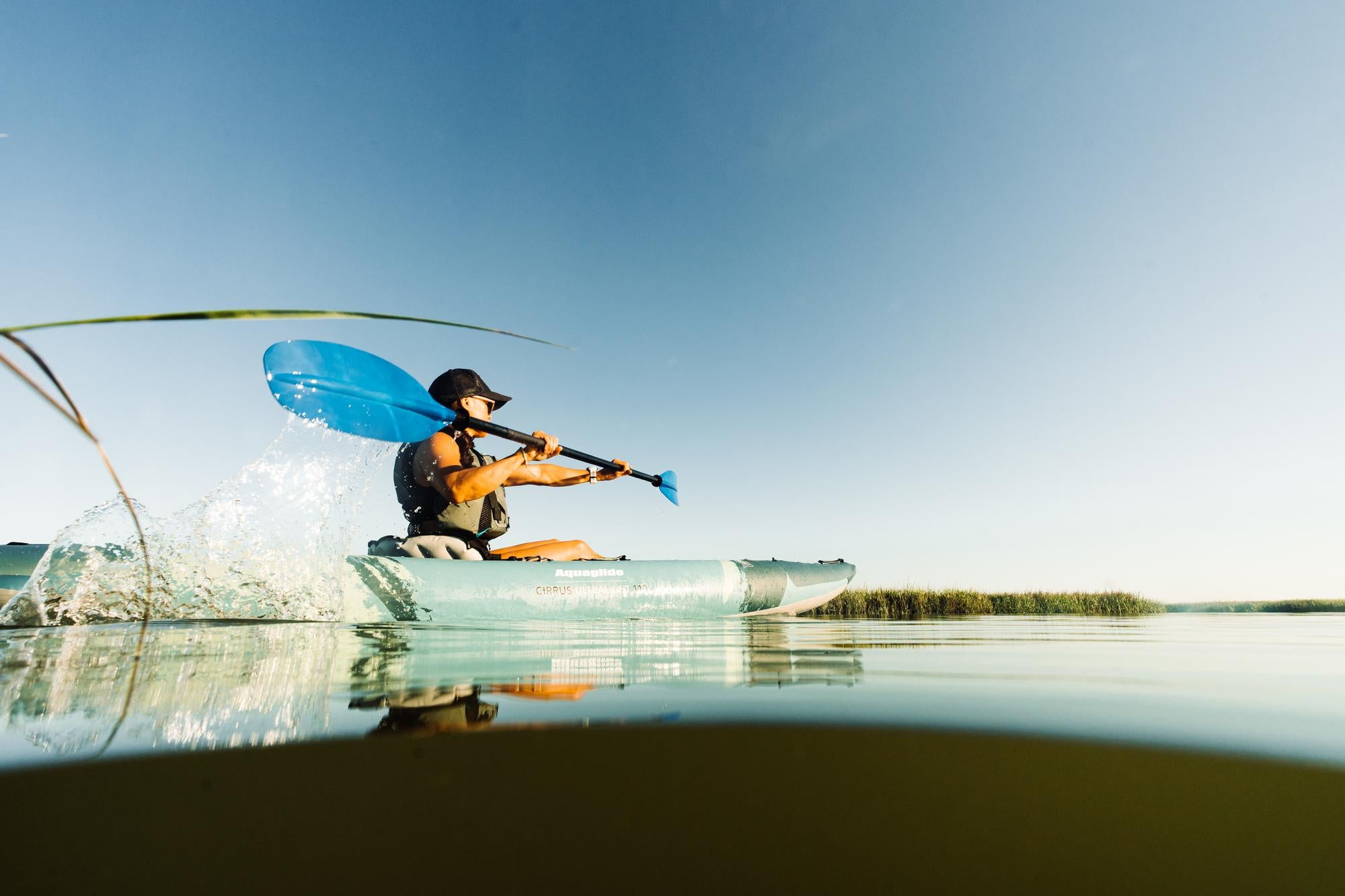How to Properly Fall Off (and Get back On) a Paddleboard
It’s bound to happen. You’re cruising along on your paddleboard, sailing smooth waters, until… oh no… you’ve lost your footing and are submerged in water. It happens, and that’s ok! But did you know there’s actually a proper way to “fall off” a paddleboard, and easy steps to getting back on? With a little off-the-water practice and quick-response techniques on the water, you’ll be falling in style in no time. Read on for eight tips on how to properly fall off, and get back on, a paddleboard.
- Fall away from the board
If you can only remember to do one thing when you’re in the process of falling, it’s to fall as far away from the board as possible. It can be easy to think that you’ll catch yourself on your board, but the reality is, if you fall on your board, it’s not super pleasant. Aim your body towards the front, back, or side when your time to fall has come. A great way to practice this? On land, “pretend” to fall several times. The repetitiveness will soon turn into instinct once you’re on the water.
- Try to hang onto your paddle
If you’re able, think about hanging onto your paddle as you’re falling in the water. This way, you’ve already got it in hand as you’re getting back on the board. In the event you lose it amidst the fall, that’s ok. Simply get back on your board (using the tips below), then proceed to prone paddle with your hands to retrieve your paddle.
- Wear a leash (on flatwater)
Having to retrieve your board that’s a long swim away from you isn’t very fun. Wearing a leash while paddleboarding allows you to easily grab hold of your board after a fall. Save that energy for when you are on the board, instead of chasing after your board. Note that you should only wear a leash on flatwater where there is no risk of entrapment - never wear a leash when paddling with current or risk of snags.
- Watch for your board
This one rings especially true if you do have a leash on your board. If you fall in, make sure the board doesn’t swing back and accidentally knock you. When you’re coming up for air, put your hands up to defend a potential board to the face.
- Wear a properly-fitted PFD
Aside from the obvious safety reasons of why you should wear a PFD, it’s a good idea to wear a PFD, whether traditional or C02, while paddleboarding to help ease your way back onto the board after a fall. Instead of having to tread water while lifting yourself up, you can more easily get yourself back on board. If you decide to wear a C02 PFD, be sure to practice inflation in non-emergency situations.
- Fall flat
Depending on the depth of the water, it is very important to fall as “lightly” and flat as possible. Don’t risk diving in if the water is shallow. Try to fall as flat as possible, bottom or belly first, and feet first as a last resort. This way, you’re able to avoid anything that’s lurking underwater (hello, rocks) that could really injure you.
- Grab the handle, kick, and climb aboard
Once it’s time for you to get out of the water, find your board’s carry handle in the center of your board, and slowly shift your body towards that. Wiggle your upper body up, letting your legs sort of rise to the surface of the water. Grab hold, kick as fast and as hard as you can, and hoist yourself onto your board, sliding your body fully onto the board, laying on it belly-side down (prone position).
- Knees to feet
Once your body is fully on, gracefully bring one knee to the board, then the other knee. When the balance is there, place one foot down, in the center of the board, followed by the other foot down, hip-width distance apart.
And that friends, is how you can manage to properly fall off, and get back on, a paddleboard. The truth is, if you’re not falling off of your paddleboard every now and then, you are not reaching your true paddleboard potential, and might be adhering to uncomfortable, rigid, positioning on the board. Paddleboarding is in fact a watersport after all, which means you’re going to get wet! But with proper fall technique, you can gain control of the situation and fall to your advantage, with little risk of getting hurt in the process. Most importantly, you will feel confident on your paddleboard for years to come.




